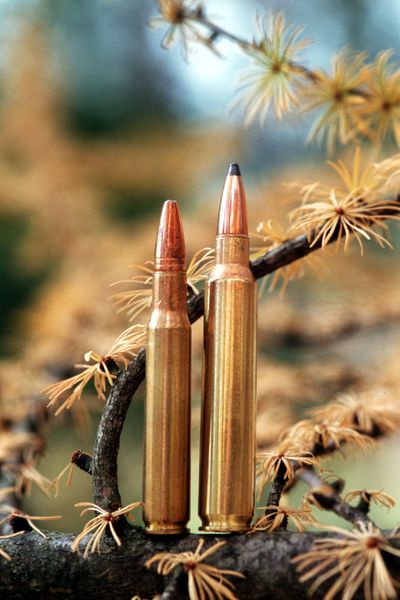Lead bullets targeted for risk to wildlife, game consumers
WSU involved in study assessing risk

The trend toward restrictions on lead bullets for hunting gained velocity recently:
•The Department of Interior in March announcement a plan to ban lead ammunition and fishing gear throughout the National Park System by 2011. (Hunting is allowed in some national parks, preserves and monuments to manage wildlife populations.)
•A study published in April provided new evidence that humans and wildlife can be exposed to lead ingestion when eating the meat of game killed with lead bullets.
Some shooting and hunting groups are taking stand against the trend.
“The National Park Service’s decision is arbitrary, over-reactive and not based on science,” Steve Sanetti, president of the National Shooting Sports Foundation, said in a prepared statement.
The NSSF is a trade association for the firearms and ammunition industry.
“Studies show that traditional ammunition does not pose a health risk to humans, or wildlife populations as a whole,” he said.
Scientists say evidence is beginning to stack up in favor of more education and possibly more restrictions on lead bullets.
In 2008, California enacted a ban on lead bullets for hunting in certain areas frequented by endangered California condors. Research indicated that condors had died from lead poisoning after ingesting bullet fragments from gut piles or wounded game.
Ammunition manufacturers contacted for this story said they were deferring comment to the NSSF.
However, Ted Novin, NSSF director of Public affairs, did not respond to an interview request for this story.
Two spokesmen for companies that make ammo noted several manufacturers that have produced non-toxic copper bullets for years.
“Copper actually has been the preferred bullet in African safaris for stopping big, dangerous game,” one said, asking to remain anonymous. “The main concern for going to copper is cost, not performance. Copper bullets are more expensive than lead.”
The NSSF Web site also points out that non-toxic bullets are not as widely available as lead, and especially difficult to find in certain calibers.
Wildlife groups and health officials contend that non-toxic ammo would be more available if more restrictions were enacted to increase demand.
Washington State University was involved in the latest study in the debate, published April 24: “Lead Bullet Fragments in Venison from Rifle-Killed Deer: Potential for Human Dietary Exposure.”
“We did the X-raying of the meat packages and Lindsay Oaks, a WSU veterinarian with a PhD in pathology, is a co-author of the study,” said Charlie Powell, spokesman for the WSU College of Veterinary Medicine.
“I was there, and I was really surprised at the amount of lead in those packages (of commercially ground venison),” said Powell, a longtime hunter and angler.
“The risk probably isn’t comparable to lead exposure from working in a mine or a child gnawing on a crib covered with the old lead-based paint,” he added, “but the study showed that eating this meat can increase exposure to lead.”
The study was commissioned by The Peregrine Fund, which the NSSF says has an anti-hunting agenda.
“Not so,” said Rick Watson, the fund’s vice president in Boise. “We’re just working with the emerging standard that there’s no safe amount of lead in the body, for wildlife or humans.”
The Peregrine Fund notes that birds of prey are especially vulnerable to lead poisoning from eating body parts of game killed or wounded by lead bullets.
The new study substantially expands on a 2008 federal Center for Disease Control report that caused an uproar among hunting groups. The CDC used information collected in North Dakota to warn of lead exposure from bullet fragments in packaged venison.
The report caused some welfare agencies to remove donations of hunter-killed game meat from charity kitchens.
The NSSF points out that lead naturally occurs in humans and that the report did not indicate “significantly” higher lead levels in humans who consumed game killed with lead bullets.
“Both the CDC report and our study demonstrate that people who eat game meat are exposed to lead,” Watson said. “That’s as far as the study goes.
“We did not demonstrate a health effect, but rather a health risk. It’s going to take a decade or so to demonstrate the health effects, but even though the CDC is still using old 1991 benchmarks to trigger action on lead consumption, the best science already demonstrates unequivocally that there’s no save level of lead in blood.”
While the NSSF recoils at any suggestion of restrictions on lead bullets, a voluntary program in Arizona, in which hunters have traded lead rounds for copper, or agreed to dispose of lead-affected offal piles — has been a success in keeping lead out of the mouths of condors, Watson said.